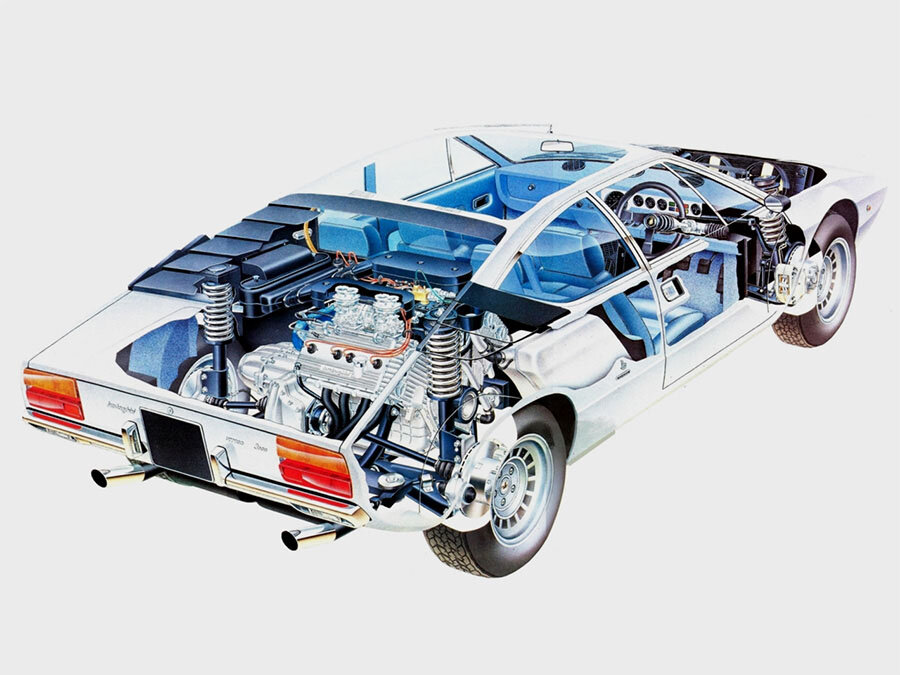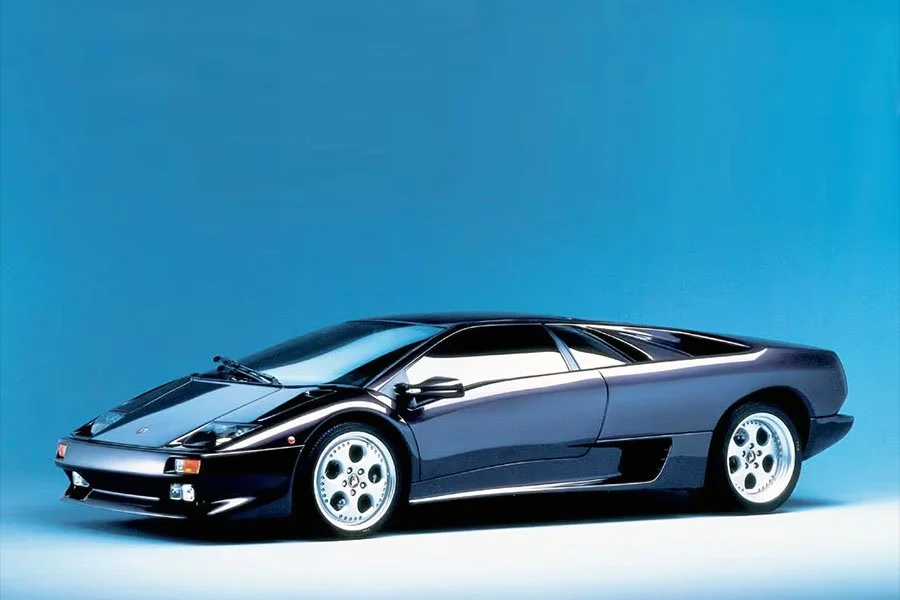Guide: Exceptional. But Too Late? - a Historical & Technical Appraisal of the Lamborghini Urraco P300
/BACKGROUND
Despite having been conceptualised as the model to dramatically increase sales and bring Lamborghini greater financial stability, the Urraco P250 proved a commercial flop.
Production started in late 1972 following major equipment and floorspace investment. However, by late 1974, less than 500 had been delivered.
The Urraco should have gone into production two years earlier than it eventually did. Lamborghini had originally conceived the model with a view to selling over 1000 examples every year.
The disappointing reality left Lamborghini deep in the red, but the Urraco was only partly responsible for a difficult few years.
Compounding the firm’s troubles had been delays for the Countach, a worldwide recession, problems at Lamborghini Trattori and unionised labour, all of which contrived to take their toll on the company founder.
In 1972, Ferruccio Lamborghini had sold his tractor company along with 51% of his motor car business. He cashed out of the final 49% in 1974 when the world was in the midst of an energy crisis that slashed demand for gas guzzling machinery.
Automobili Lamborghini’s new owners were Swiss industrialists, Georges-Henri Rossetti and Reine Leimer.
Throughout this tumultuous period, development work continued on the Urraco. It mainly focused on the Paolo Stanzani-designed V8 engine that had been created especially for the new model at considerable expense.
In November 1974, an uprated Urraco P300 was launched at the Turin Motor Show. It immediately went into production alongside the Countach LP400, Espada Series 3 and Jarama S.
ENGINE / TRANSMISSION
Most significantly, the Urraco P300 came with an enlarged three-litre engine. Equally importantly, the power unit now incorporated dual instead of single overhead camshafts.
To take capacity up to three-litres, Paolo Stanzani’s all-alloy 90° V8 was stroked from 53mm to 64.5mm. Bore went unchanged at 86mm for an overall displacement of 2997cc (an increase of 534cc).
Compression was dropped from 10.5:1 to 10.0:1.
Four new Weber 40 DCNF twin-choke downdraught carburettors were installed to replace the old 40 IDF 1s used previously.
The consequence of these improvements was a dramatic jump in output. Peak power was up 40bhp to 260bhp at an otherwise unchanged 7500rpm. The torque rating also rose considerably; 195lb-ft was now on tap at 3500rpm compared to 166lb-ft at 5750rpm for the P250.
As before, ignition was via two Marelli coils and a single Marelli distributor.
Lamborghini’s five-speed manual gearbox was beefed up to cope with the increased power and torque. Transmission was via a single dry-plate clutch and Lamborghini differential.
CHASSIS
New damper settings improved the ride, but otherwise little was changed to the existing platform.
The P300 was based on the same steel monocoque bodyshell as its predecessor. The engine was housed transversely like the Miura.
Suspension was independent all-round with MacPherson struts, coil springs and telescopic shocks. Anti-roll bars were fitted at either end.
The twin circuit brake system incorporated unchanged 278mm ventilated Girling discs.
Campagnolo’s handsome five-bolt cast magnesium wheels were retained. They measured 7.5 x 14-inches and originally came shod with Michelin XWX tyres.
An 80-litre fuel tank was fitted in the engine bay.
BODYWORK
Visually, the only change made to the P300 Urraco was a switch from a two-bank to six-bank radiator cooling vent on the front lid.
The rest of Marcello Gandini’s soft wedge creation was unaltered.
In a decade not exactly renowned for design longevity, the Urraco proved somewhat timeless. Compared to Bertone’s other mid-engined 2+2, the Ferrari Dino 308 GT4, the baby Lamborghini aged very well, even though it was ultimately outsold by the Maranello product by five to one.
INTERIOR
Build quality was considerably improved over earlier examples and nowhere was this more apparent than in the cockpit.
Bertone had originally been responsible for furnishing the bodyshells, but by the time the P300 was on stream, this work had been taken in-house.
Lamborghini used better quality materials and ensured a higher standard of fit and finish.
To this end, P300s were generally equipped with full leather interiors instead of the often garish two-tone leather and fabric combinations seen earlier.
The full width dash layout was still just as haphazard though. The rev counter and speedometer were located at either end of the instrument binnacle and angled in towards the driver. Supplementary gauges and various rocker switches were housed in between.
Lamborghini’s unusual deep dish steering wheel with its four arced horizontal spokes and leather rim was also retained.
WEIGHT / PERFORMANCE
Weight was unchanged at 1300kg as was the 42/58 front to rear weight distribution.
The extra power meant top speed rose to 156mph and half a second was shaved off the 0-62mph time (now 6.2 seconds).
Additionally, the increased torque made a dramatic improvement to the engine’s general flexibility.
PRODUCTION CHANGES
Like the P250 (which remained in production for a few months longer to use up an overstock of parts), the only update was the gradual shift to anodised black bumpers, wipers and window frames. A more conventional three-spoke steering wheel was also introduced towards the end of production.
P300 SILHOUETTE & END OF PRODUCTION
In March 1976, the P300 Urraco platform was used for a two-seat targa-topped spin-off called the Silhouette. Another Bertone-designed model, the Silhouette was arguably the car the Urraco always should have been.
Unfortunately, it arrived during Lamborghini’s darkest period. Only 52 were built before production ended in October 1978.
That same month, the Urraco was also discontinued. Despite the P300’s much-improved specification, commercial success had remained elusive. Only 205 were completed.
AUTOMOBILI LAMBORGHINI’S BANKRUPTCY
The discontinuation of both the Urraco and Silhouette coincided with Automobili Lamborghini’s bankruptcy.
Whilst at the helm of the company, Rossetti and Leimer had made a series of bad decisions, none more so than the mishandling of funds from BMW to develop and manufacture the M1 supercar.
The M1 programme should have been a lifeline for Lamborghini, but Rossetti and Leimer inexplicably used the BMW cash to develop a military fast response vehicle. Unveiled at the Geneva Motor Show in 1977, the Cheetah proved a complete disaster and sealed Lamborghini’s fate.
BMW pulled out and soon afterwards, Automobili Lamborghini was declared bankrupt.
Alessandro Artese was appointed by the Italian courts to try and turn things around while a suitable buyer was found...
Text copyright: Supercar Nostalgia
Photo copyright: Lamborghini - https://www.lamborghini.com
































